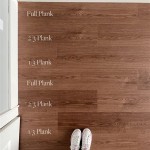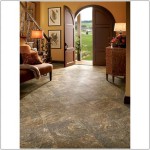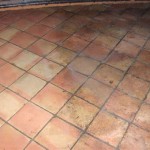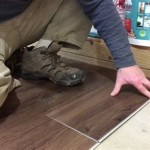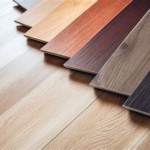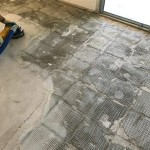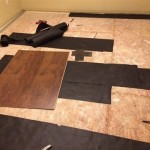What Can I Use To Get Paint Off Of Hardwood Floors?
Removing paint from hardwood floors requires a careful approach to avoid damaging the wood's surface and finish. The most suitable method depends on the type of paint (latex, oil-based, or enamel), the age of the paint, and the type of finish on the floor. Several tools and products are available, each with its own set of advantages and disadvantages. This article outlines various options and provides guidance on how to use them effectively.
Initial Assessment and Preparation
Before commencing any paint removal process, a thorough assessment is crucial. Identify the type of paint, which can often be determined by reading the label on any remaining paint cans or by using a paint thinner test. Dab a small amount of paint thinner on a hidden area of the paint. If it softens or dissolves, the paint is likely latex-based. If it remains unaffected, it is likely oil-based or enamel. Knowing the paint type will guide the selection of the appropriate removal method. In addition, identify the type of floor finish (polyurethane, varnish, shellac) as certain solvents or techniques can damage specific finishes.
Protect the surrounding areas by covering them with drop cloths or plastic sheeting. Adequate ventilation is essential, especially when using chemical solvents. Open windows and doors, or use a fan to circulate air. Personal protective equipment (PPE) is also necessary. Wear gloves to protect your hands from chemicals and sharp tools, and eye protection to prevent splashes. If using solvents, a respirator may be required to avoid inhaling harmful fumes.
Perform a test in an inconspicuous area of the floor. This involves applying the chosen removal method to a small patch of paint and observing the results. This test will help determine the effectiveness of the method and whether it causes any damage to the floor finish. If the test area shows adverse effects, consider alternative methods or consult a professional.
Mechanical Removal Methods
Mechanical removal methods involve physically removing the paint from the wood surface. These methods are often preferred for their minimal use of chemicals, but they require greater care and precision to avoid damaging the wood.
Scrapers: A sharp, flat scraper is useful for removing dried paint drips or splatters. Use a plastic scraper rather than a metal one to minimize the risk of scratching the floor. Hold the scraper at a shallow angle and gently push it under the edge of the paint, working along the grain of the wood. Avoid applying excessive pressure, which can gouge the wood. For larger areas, a floor scraper with a long handle can be used, but exercise caution to maintain control and prevent damage.
Heat Gun: A heat gun can soften paint, making it easier to scrape off. Hold the heat gun several inches away from the painted area and move it back and forth to evenly distribute the heat. Avoid overheating the paint, which can cause it to bubble or burn. As the paint softens, use a scraper to gently remove it. Be particularly careful with older floors, as the heat can also soften the existing finish. Wearing heat-resistant gloves is crucial when using a heat gun.
Sanding: Sanding should be reserved as a last resort, as it can remove not only the paint but also the floor's finish and potentially damage the wood itself. Use a fine-grit sandpaper (120-grit or higher) and a sanding block or orbital sander. Sand lightly, following the grain of the wood. Regularly check the progress to avoid sanding too deeply. After sanding, the area will likely require refinishing to match the surrounding floor. This method is more suitable for refinishing entire sections of flooring after paint removal rather than spot treatments.
Chemical Removal Methods
Chemical paint removers work by softening or dissolving the paint, making it easier to remove. These products are available in various formulations, including liquids, gels, and pastes. When using chemical removers, strict adherence to the manufacturer's instructions is vital, and proper ventilation and PPE are non-negotiable.
Paint Thinners: Paint thinners are effective for removing oil-based paints. Apply the thinner to the painted area and allow it to sit for the recommended time, as indicated on the product label. The thinner will soften the paint, which can then be scraped off with a plastic scraper. Wipe the area with a clean cloth dampened with thinner to remove any remaining residue. Be aware that paint thinners are flammable and should be used with caution.
Paint Strippers: Paint strippers are stronger than paint thinners and are suitable for removing multiple layers of paint or particularly stubborn coatings. Apply the stripper liberally to the painted area and allow it to penetrate the paint. The waiting time will vary depending on the product and the thickness of the paint. Once the paint has softened, use a scraper to remove it. Follow up with a neutralizer, as recommended by the manufacturer, to stop the stripping action and prepare the surface for finishing. Some paint strippers may contain harsh chemicals, so always use appropriate PPE and ensure adequate ventilation.
Citrus-Based Paint Removers: These removers are a more environmentally friendly alternative to traditional chemical strippers. They are made from natural citrus oils and are less toxic and less odorous. Apply the citrus-based remover to the painted area and allow it to sit for the recommended time. The paint will soften and can be scraped off. While citrus-based removers are less harsh, they may take longer to work and may not be as effective on all types of paint. It's always advisable to test in an inconspicuous area first.
Natural and Homemade Remedies
For those seeking alternatives to harsh chemicals, several natural and homemade remedies can be explored. While these methods may not be as effective as commercial products, they are often safer and more environmentally friendly.
Vinegar: White vinegar is a mild acid that can help soften latex paint. Soak a cloth in vinegar and apply it to the painted area. Allow it to sit for several minutes, then try to scrape off the paint. This method is most effective on fresh paint spills but may not work on dried or hardened paint.
Baking Soda Paste: A paste made from baking soda and water can act as a mild abrasive to help lift paint. Apply the paste to the painted area and gently scrub with a soft cloth or sponge. Rinse with water and dry thoroughly. This method is best suited for small areas or light paint splatters.
Dish Soap and Hot Water: For fresh paint spills, a solution of dish soap and hot water can be effective. Soak a cloth in the solution and gently wipe the painted area. The soap helps to break down the paint, while the hot water softens it. Rinse with clean water and dry thoroughly. This method is most effective when the paint is still wet.
Post-Removal Cleaning and Refinishing
After removing the paint, it is essential to thoroughly clean the area to remove any remaining residue. Use a clean cloth dampened with water or a mild cleaning solution. Ensure the area is completely dry before proceeding to the next step.
Refinishing may be necessary, especially if the paint removal process damaged the existing floor finish. This involves sanding the area to create a smooth surface and then applying a new coat of finish. Matching the existing finish can be challenging, so it may be necessary to refinish an entire section of the floor to ensure a uniform appearance.
Apply the new finish according to the manufacturer's instructions. Multiple coats may be required to achieve the desired level of protection and gloss. Allow each coat to dry completely before applying the next. Proper drying time is essential to prevent tackiness or other imperfections.
Following these steps carefully will aid in successful paint removal from hardwood floors, minimizing damage and restoring the floor to its original condition. Should the paint removal prove too complex or the risk of damage too high, consult a professional flooring contractor for expert assistance.

How To Remove Paint Off Hardwood Floors Safely

Don S Room Progress How To Remove Paint From Wood Floors At Home With Ashley

Does Wd 40 Remove Paint From Hardwood Floors Mr Sander

Easily Remove Paint From Your Floors

How To Remove Paint From Hard Wood Floors

Tested 10 Easy Ways To Get Paint Off Hardwood Floors Torera George

How To Remove Old Paint From A Wooden Floor Esb Flooring

How To Get Paint Off Of Hardwood Floors Easy Tutorial

Goof Off Hardwood Paint Splatter Remover Liquid 12 Fl Oz Fg900 At Com

Don S Room Progress How To Remove Paint From Wood Floors At Home With Ashley
See Also
